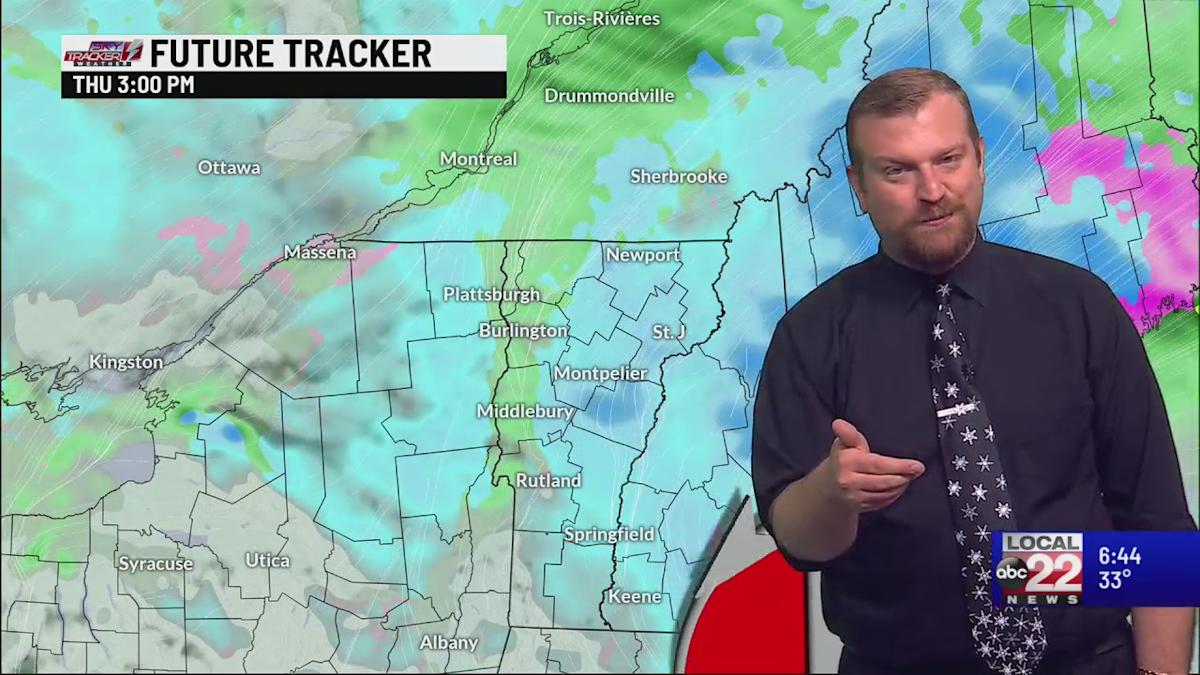Understanding A Wintry Mix Of Rain And Snow

Table of Contents
The Science Behind a Wintry Mix: Atmospheric Conditions
A wintry mix is a fascinating – and often frustrating – result of complex atmospheric conditions. The key player is the temperature gradient within the atmosphere. The temperature profile, specifically the freezing level (the altitude at which the temperature is 0°C or 32°F), dictates the type of precipitation that falls.
- Temperature Profile: A wintry mix occurs when there's a significant temperature difference between the ground and the upper atmosphere. You might have warm air aloft and freezing temperatures near the surface, or layers of both. This creates a complex scenario where precipitation begins as snow high in the atmosphere. As it falls, it encounters warmer air and undergoes transformations.
- Freezing Level: The height of the freezing level is crucial. If the freezing level is high, precipitation can fall as rain. If it's low, snow reaches the ground. The variability in the freezing level's height is what contributes to the mix of precipitation types.
- Moisture Content: The amount of moisture in the atmosphere also influences the intensity and type of precipitation. Higher moisture content leads to heavier snowfall, sleet, or freezing rain.
The interplay of these factors—temperature inversion (where warmer air sits above cooler air), temperature at various altitudes, and moisture levels—creates the perfect recipe for a wintry mix, involving precipitation types such as freezing rain, sleet, snow, and rain.
Identifying the Types of Precipitation in a Wintry Mix
Understanding the different types of precipitation in a wintry mix is critical for safety.
-
Snow: Snow forms when water vapor in the atmosphere freezes into ice crystals. These crystals clump together to form snowflakes. Snow is typically fluffy and white. Visual Cue: Light and fluffy, accumulates easily.
-
Sleet: Sleet begins as snow but melts as it falls through a layer of warmer air. Before reaching the ground, it refreezes into small, ice pellets. Visual Cue: Small, hard, icy pellets that bounce when they hit the ground.
-
Freezing Rain: Freezing rain starts as rain in warmer air above the freezing level. When it encounters a layer of sub-freezing air near the ground, it freezes on contact with surfaces, forming a coating of glaze ice. Visual Cue: A clear, glassy coating of ice on surfaces. This is extremely dangerous!
-
Rain: Rain forms when water droplets in clouds grow too heavy to remain suspended and fall to the ground as liquid water. In a wintry mix, rain can coexist with other precipitation types, especially if the freezing level is relatively high. Visual Cue: Liquid water.
Safety Precautions During a Wintry Mix of Rain and Snow
A wintry mix presents significant safety hazards. Black ice, which is nearly invisible and incredibly slippery, is a common danger. Power outages are also frequent, as ice can weigh down power lines. Travel becomes extremely difficult and dangerous.
- Safe Driving Tips: Avoid driving during a wintry mix if possible. If you must drive, reduce speed drastically, increase following distance, and ensure your vehicle is equipped with winter tires and an emergency kit.
- Preparing Your Home for Power Outages: Stock up on non-perishable food, water, and flashlights. Have a backup heating source, if needed.
- Protecting Yourself from the Cold and Ice: Dress warmly in layers and wear waterproof boots with good traction. Avoid prolonged exposure to the cold and wet conditions.
- Emergency Preparedness Checklist: Ensure you have a well-stocked emergency kit including a first-aid kit, blankets, extra batteries, a hand-crank radio, and any necessary medications.
Understanding the black ice dangers and taking precautions to ensure winter storm safety is crucial.
Forecasting and Predicting a Wintry Mix
Accurately predicting a wintry mix is challenging for meteorologists because of the precise atmospheric conditions needed. Even slight variations in temperature profiles can significantly change the type of precipitation.
- Weather Radar and Satellites: Meteorologists rely heavily on weather radar to track precipitation and its intensity. Weather satellites provide a broader view of the atmospheric conditions. Weather forecast accuracy relies on the intricate interpretation of data from these tools.
- Winter Storm Warnings: Pay close attention to winter storm warnings and advisories issued by your local meteorological agency. These warnings provide crucial information about the timing and severity of the wintry mix.
Conclusion: Staying Safe and Informed During a Wintry Mix of Rain and Snow
Understanding the meteorological conditions leading to a wintry mix, identifying the different precipitation types, and prioritizing safety precautions are vital for navigating this complex weather event. Remember, preparation is key! Stay informed about the weather forecast accuracy and heed all winter storm warnings. Understanding your local weather and wintry mix potential is key. Stay prepared for the next wintry mix by taking the necessary safety measures and having an emergency plan in place. Be ready for any type of wintry mix and stay safe!

Featured Posts
-
 Recent D Wave Quantum Inc Qbts Stock Performance A Detailed Look
May 21, 2025
Recent D Wave Quantum Inc Qbts Stock Performance A Detailed Look
May 21, 2025 -
 National Treasure Trafficking Antiques Roadshow Episode Results In Arrests
May 21, 2025
National Treasure Trafficking Antiques Roadshow Episode Results In Arrests
May 21, 2025 -
 Economic Zone Receives 545 Million Investment Maybanks Role
May 21, 2025
Economic Zone Receives 545 Million Investment Maybanks Role
May 21, 2025 -
 Australian Speed Record Attempt British Ultrarunners Epic Run
May 21, 2025
Australian Speed Record Attempt British Ultrarunners Epic Run
May 21, 2025 -
 Juergen Klopp Nereye Gidecek En Guencel Transfer Haberleri
May 21, 2025
Juergen Klopp Nereye Gidecek En Guencel Transfer Haberleri
May 21, 2025
